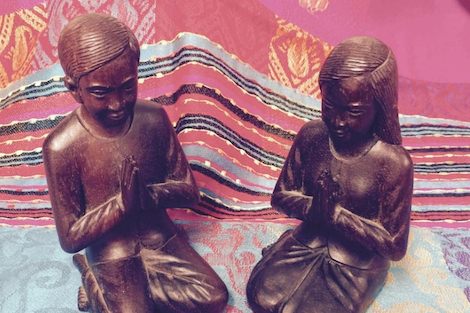 As in Manila, Rome or Kolkata, crossing the road in Kunming, China requires a little courage. Pedestrian crossings are aspirational more than anything else; cars and buses assert themselves regardless of any theoretical road rules. A particular local hazard is electric the motorcycle (e-bike). They zip everywhere and are virtually silent, so you have to look for them to avoid a collision.
As in Manila, Rome or Kolkata, crossing the road in Kunming, China requires a little courage. Pedestrian crossings are aspirational more than anything else; cars and buses assert themselves regardless of any theoretical road rules. A particular local hazard is electric the motorcycle (e-bike). They zip everywhere and are virtually silent, so you have to look for them to avoid a collision.
My husband, baby son and I moved to Kunming for five months last year; navigating the traffic was one of our many cross-cultural adventures. When the traffic looked particularly aggressive, with no sign of abating, Evan joked that we needed to 'cross like a Chinese person' – bravely weaving between vehicles, taking lanes one by one. Sometimes we would shadow a local – and feel particularly humbled if that local happened to be, say, nine years old.
One afternoon, early in our stay, there was no local pedestrian to follow. We waited, letting fleeting gaps in peak-hour traffic pass, unsure of when to proceed.? A nearby police officer had compassion on us. He wasn’t a traffic cop – he didn’t wear the white gloves or high-vis vest – but when he sighted three wàiguórén (??? – foreigners) hesitating on the curb, the littlest one strapped to Evan’s chest, he waded out onto the churning road and held up his hand to make a path for us. He waved us through. We joked that he was simply impatient – 'how long could they possibly stand there?' he was thinking. But we were grateful for the tenderness he showed.? Our time in China was part of my husband’s study. He was there to learn Mandarin. I quickly discovered that I was there to learn about faith – what it means to find it and live it in a foreign land, without language, work or a Catholic Church.
'I am the good shepherd. The good shepherd lays down his life for the sheep. The hired hand is not the shepherd and does not own the sheep. So when he sees the wolf coming, he abandons the sheep and runs away…I am the good shepherd; I know my sheep and my sheep know me – just as the Father knows me and I know the Father – and I lay down my life for my sheep…' (John 10:11 – 12; 14 – 15).
Sometimes when I pray, I use the Examen of St Ignatius. My imagination unravels the day, noticing the frustrations and joys, reading a passage of scripture and then having a conversation with God. As part of these conversations, I see Jesus beside me, and talk with him as a friend. ?The first time that I prayed this way in China, the Jesus I imagined, to my surprise, had a Chinese face.
I could write a lot about the history of depictions of Jesus: how he rarely looks like the Palestinian man he was; how European Christs go hand in hand with imperialism in many parts of the world. There is a lot to say, theological and political, about this.? But my prayer in Kunming wasn’t particularly intellectual or polemical. It happened, I suppose, in my gut. I turned to Jesus and he looked like the people there. He belonged there.
He is not a wàiguórén God. He is God.
Perhaps it was the police officer that showed me this. The image of that man beckoning to us through a sea of vehicles gave a brief local face to the Gospel’s good shepherd. Reading that passage I was struck by the faithfulness of a God who does not abandon us. A communicative God, whose voice is known.
Far from home, and with maybe two dozen words of Mandarin, those things mattered.
Chantelle Ogilvie-Ellis is a Sydney writer. She works in justice and peace promotion.